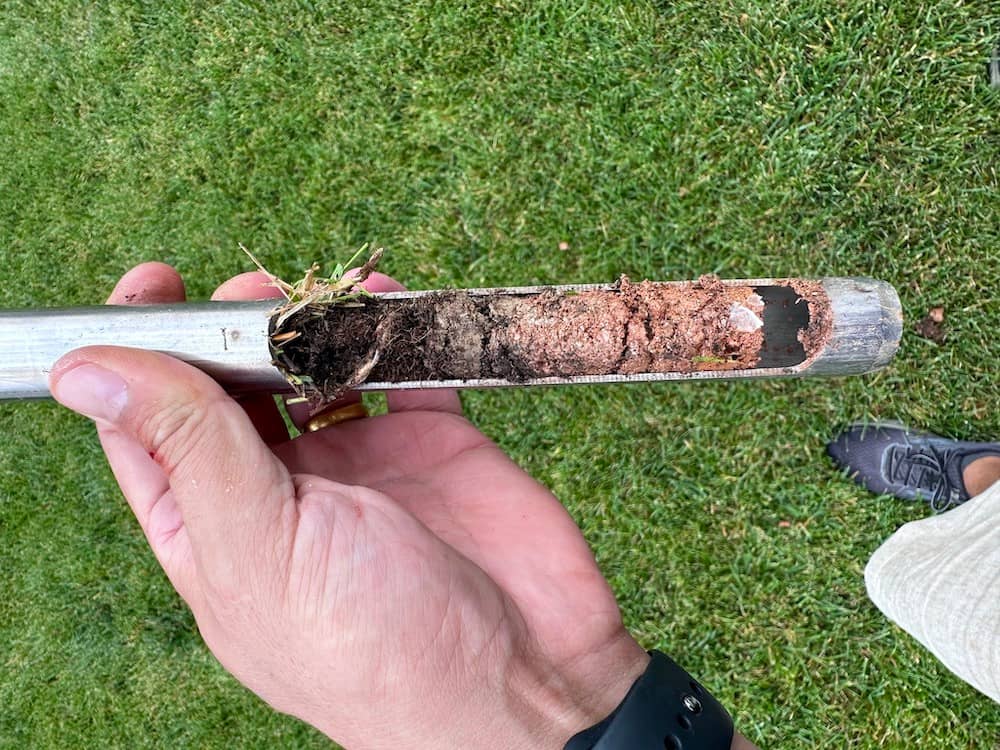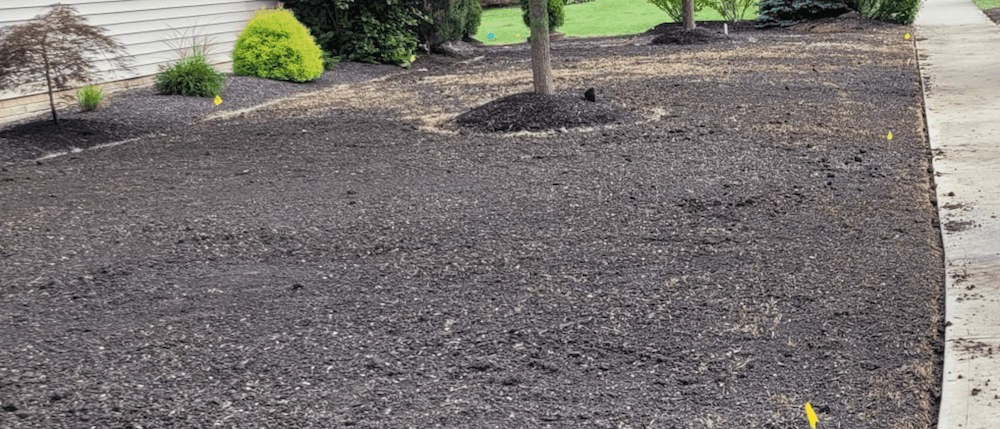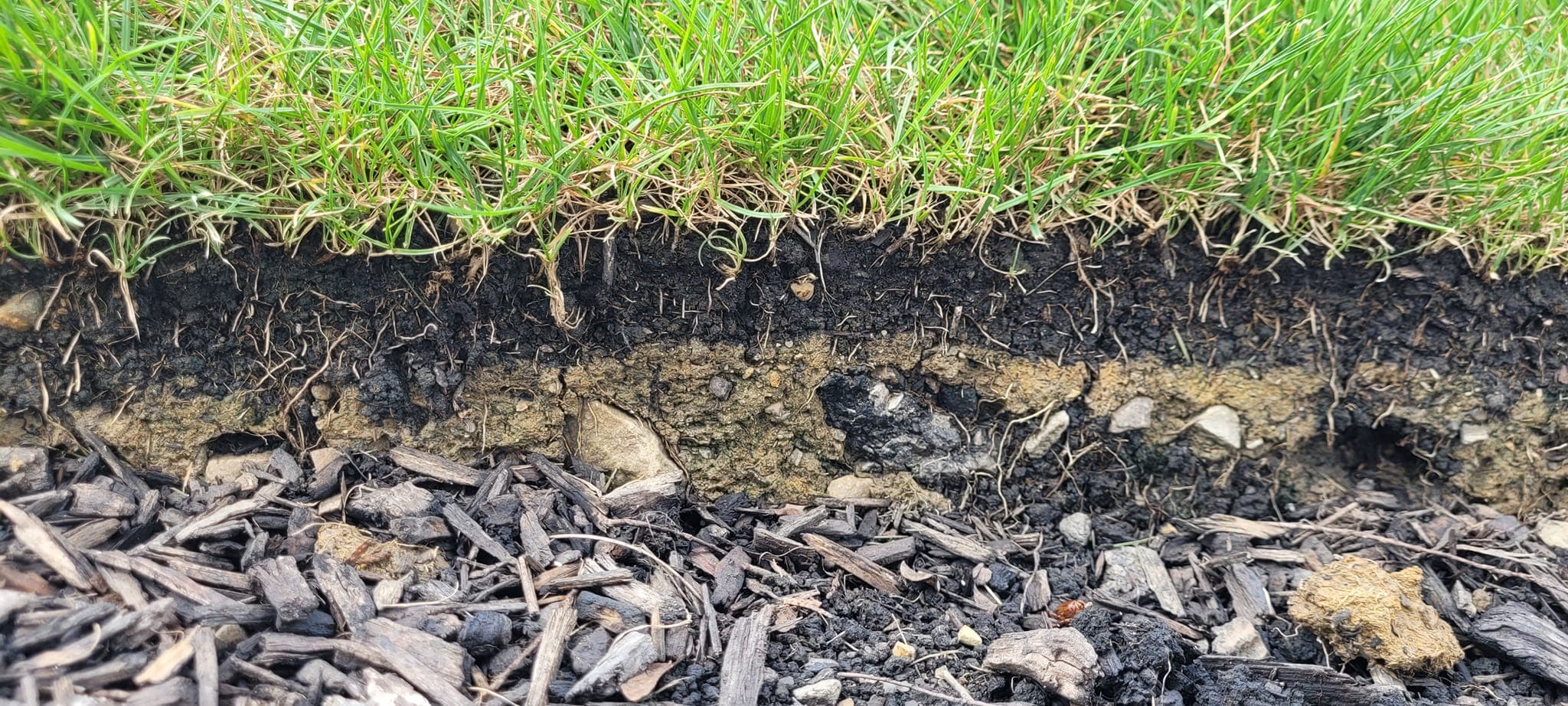Key Takeaways
Loamy soil, a mix of sand, silt, clay, and nutrients, is ideal for sod due to optimal drainage and nutrient retention.
Conduct a soil test before to assess pH and texture, ensuring compatibility with the sod variety.
Aim for a 3-6 inch deep topsoil layer for sod, adjusting based on climate, existing soil condition, and land topography.
Amend poor soil with compost and level the ground before laying sod for better root establishment and growth.
A beautiful, lush lawn doesn’t happen by magic. One key way to make sure your lawn looks amazing is by starting with a good foundation — your topsoil.
In this guide, we’ll walk you through choosing the best topsoil for sod.
The Importance of Top Soil for Success
A solid foundation of topsoil can be the difference between a disappointing sod lawn and a prosperous one. This is where your sod grass establishes its roots and takes in important nutrients to help it stay healthy and grow. In other words, it's the home of your grass. If your grass has a good home, it can flourish.
But you can’t just choose any topsoil. You will need to consider your chosen sod grass and its unique needs. With that being said, most sod grass lawns do well in loamy soil. Loamy soil is a balanced mix of sand, silt, clay and other nutrients. It offers the best of sandy and clay soils by delivering optimal drainage and nutrient retention for your grass.
With this info in mind, the next step is to take a look at your current lawn and determine if it's ready for sod. Let’s talk about what you need to do to prepare for your installation.
Level Up Your Lawn Skills
Once per week we'll send you an interview from someone who has mastered the art of lawn care.
Evaluating Your Current Lawn: Preparing for New Sod
Before ordering your new sod lawn, take some time to evaluate the condition of your current lawn. The best way to do this will be through a soil test. A soil test will help you learn the pH of your soil. Sod grass tends to do best with soil that has a neutral to slightly acidic pH. A soil test will also reveal the texture of your soil and if it's sandy, clay or loamy.
Each sod grass species has unique soil preferences, so having this information in hand will help you choose the best grass for your lawn. Sometimes, you might be able to install sod with your current lawn conditions. However, if your soil test reveals your current lawn doesn’t offer favorable conditions, you may need to put down a layer of topsoil to give your sod a consistent, loamy layer to establish roots. But how much topsoil will you need?

How Much Top Soil Do You Need for Sod?
While determining the amount of topsoil you need for your lawn might seem tricky, it’s actually quite simple. The typical rule of thumb is to aim for a layer of topsoil around 4-6 inches deep. This will give your sod enough depth to reach its roots down and establish itself. This will also ensure that the water can soak down and give your grass plenty of moisture and nutrients. You also need to make sure to remember, this isn’t a one-size-fits solution for all sod lawns. The ideal depth can be influenced by factors such as the condition of your existing soil and the type of sod you’ve chosen. If you decide to work with a professional installer, they can help you understand what your lawn needs, but you’ll have to do research if you are DIY-ing your installation.

The Best Soil Types to Lay Under Sod
When you’re ready to buy your topsoil, you will want to consider the composition. Remember, the Goldilocks of soil is loamy soil. This provides an ideal blend of sand, silt and clay to give your lawn the ideal stage to flourish.
Again, it’s worth remembering that each sod grass has different soil needs. So, while loamy soil is usually the best, you should consider the specific needs of your chosen grass species before spending money and effort on laying down topsoil.
Expert Tips: Prepping for Sod Like a Pro
So, now you know the importance of topsoil, and you’re ready to order your new sod lawn. It’s exciting to imagine your new vibrantly green dream lawn, but first, you should make sure your soil is properly prepared for sod installation. Let’s cover some pro tips that will get your soil sod ready.
Amending Your Soil: Best Practices Before Installation
Whether you lay down topsoil or decide to use your existing soil, you may find that your soil needs amending. Sometimes, the soil is of poor quality and not fit to create a healthy environment for a new lawn. If this is the case, you can enrich it with compost to bring its nutrient levels up and ensure your sod lawn installation is a success.
To amend your soil, get your compost and spread a one-inch layer across your lawn. You should then use a rototiller to help mix the compost and ensure your soil is amended.<p>
Leveling and Laying: Soil Prep for Optimal Sod
Before installing your sod, you may also need to level out your lawn and increase the elevation. If you don’t lay your sod on a firm and level base of soil, it may be more difficult for the grass to take root. By evening out your soil, you’ll have a consistent surface where your new lawn will be able to thrive.
When your soil is finally prepped, you can begin laying your sod. Strategic planning is key here. A good place to start is on the longest straight edge of your yard (like along your driveway), so you have a guideline to follow from the beginning. As you lay your sod, you want to think of them like laying bricks. Stagger the seams of the sod and try to ensure the sod is as snug as possible with the other sections to give it a more natural look.
Of course, you can also rely on a professional sod installer if you don’t want to lay the sod yourself.
Care and Maintenance: A Lush, Long-Lasting Lawn
It may have been a big project, but you’ll be rewarded with a beautifully lush, long-lasting lawn in the end. Of course, your sod won’t take care of itself, so make sure to follow a care and maintenance schedule after you lay your sod.
The first month will require you to pay extra attention to your watering schedule. You’ll need to soak your lawn immediately after installation for around 45 minutes to give your lawn moisture and ensure it can take root. You’ll want to continue to water your lawn three times a day for the first week. In the second week, you should be able to pare down to twice a day. For the third week, just make sure you’re providing your lawn with one inch of water per week. After about a month, your lawn should have taken root, and you can switch to a typical lawn maintenance schedule!
Along with water, your sod lawn will also appreciate being fed. Using fertilizer can help give your sod a nutrient boost that helps it grow. Also, keep an eye out for dry patches, pests, diseases and weeds that could affect the health of your new lawn. Address these issues as soon as they crop up so your lawn can look its best.
Finally, don’t forget about lawn grooming. Regular mowing will keep your lawn looking neat and tidy. Just make sure not to cut the grass too short - taller grass blades can shade the soil, reducing water evaporation and promoting deeper roots.
Plan Your Project Like a Pro
With this information in hand, you’re ready to start planning your sod project! Make planning as easy as possible with Sod Calculator. With Sod Calculator, you can easily get a complete sod estimate sent straight to your inbox. Enter your location, draw some simple shapes along your lawn, choose your grass type and we’ll provide you with information about how much sod you’ll need and the cost. Estimate your project with Sod Calculator today!
This article was originally published on January 24, 2024
Level Up Your Lawn Skills
Once per week we'll send you an interview from someone who has mastered the art of lawn care.
